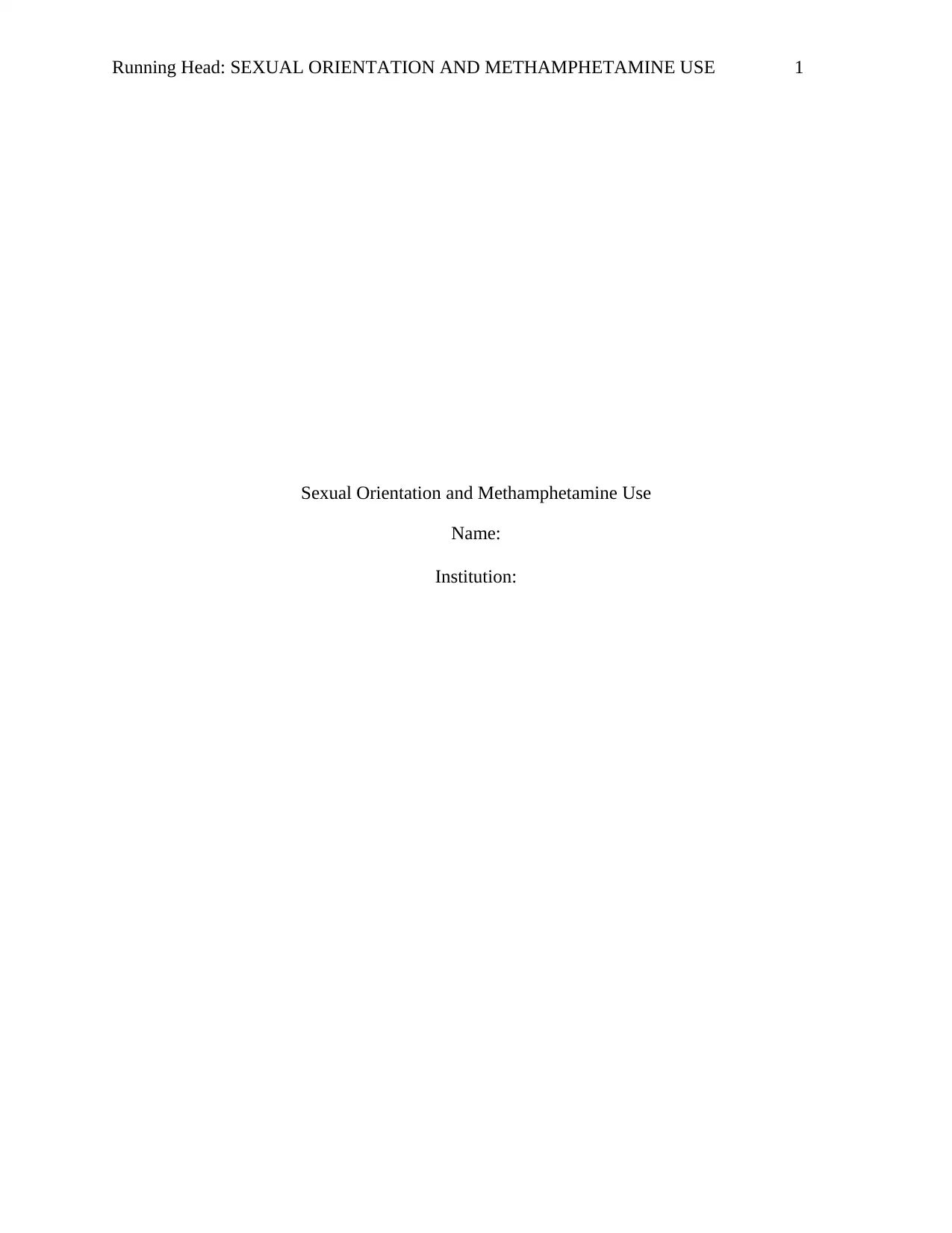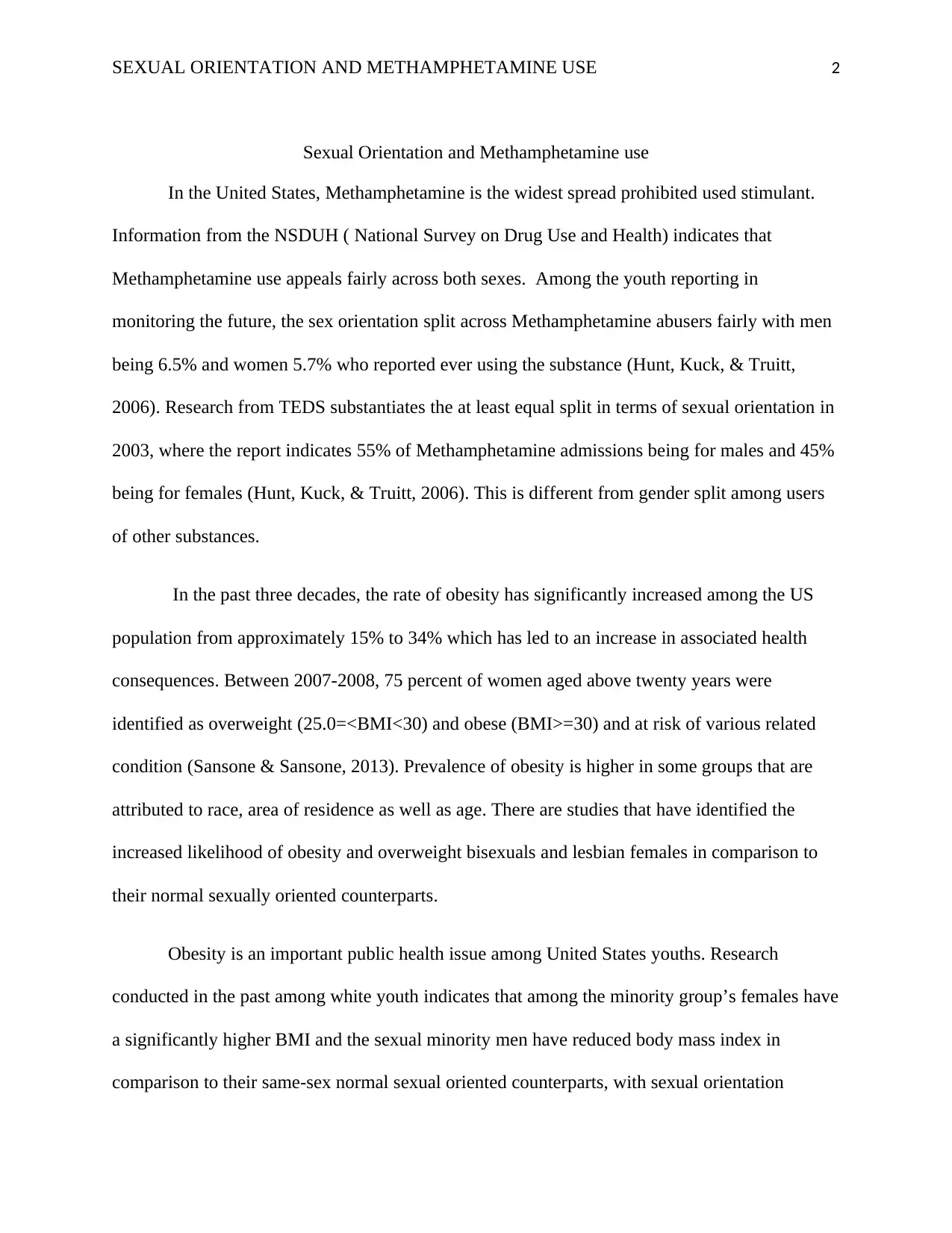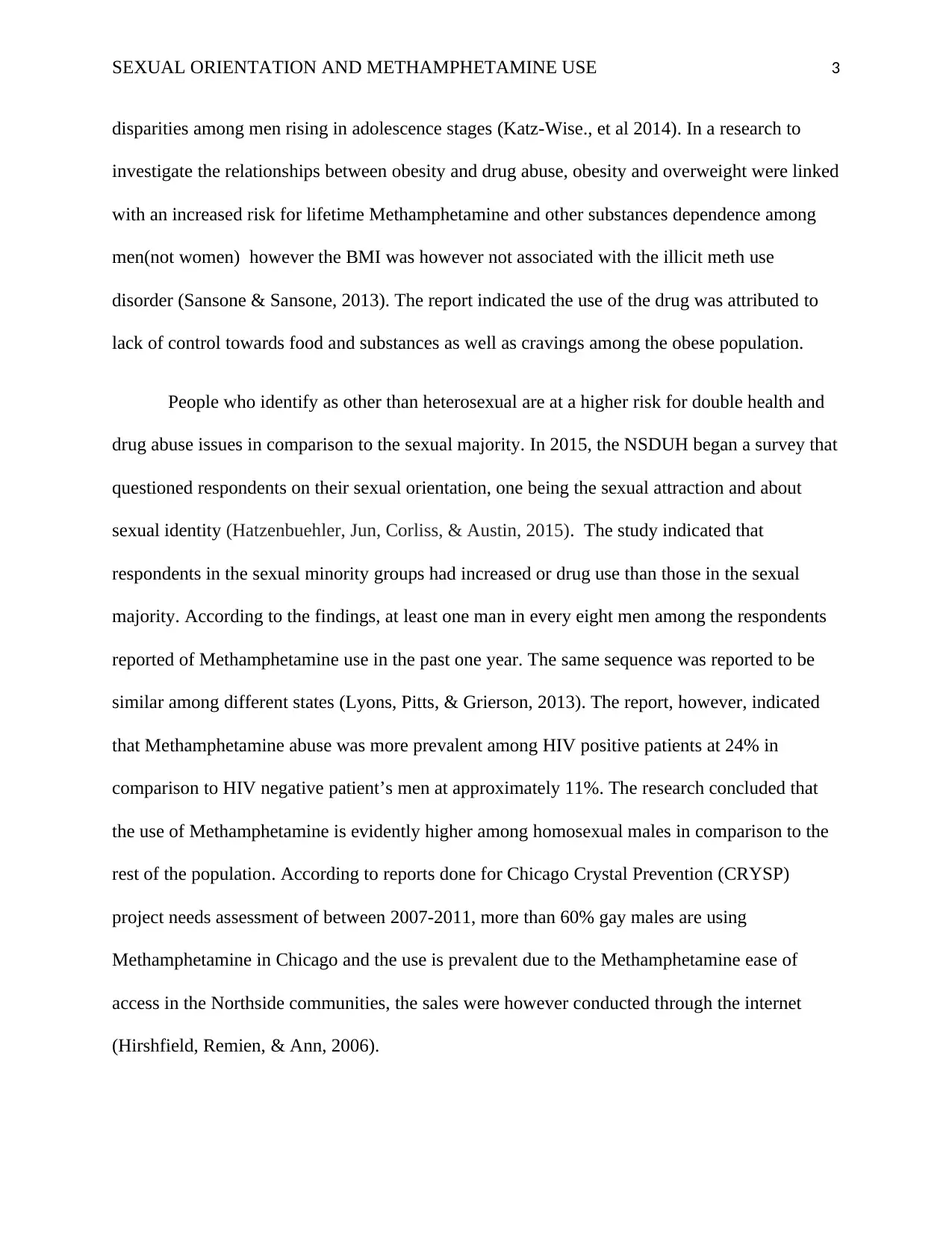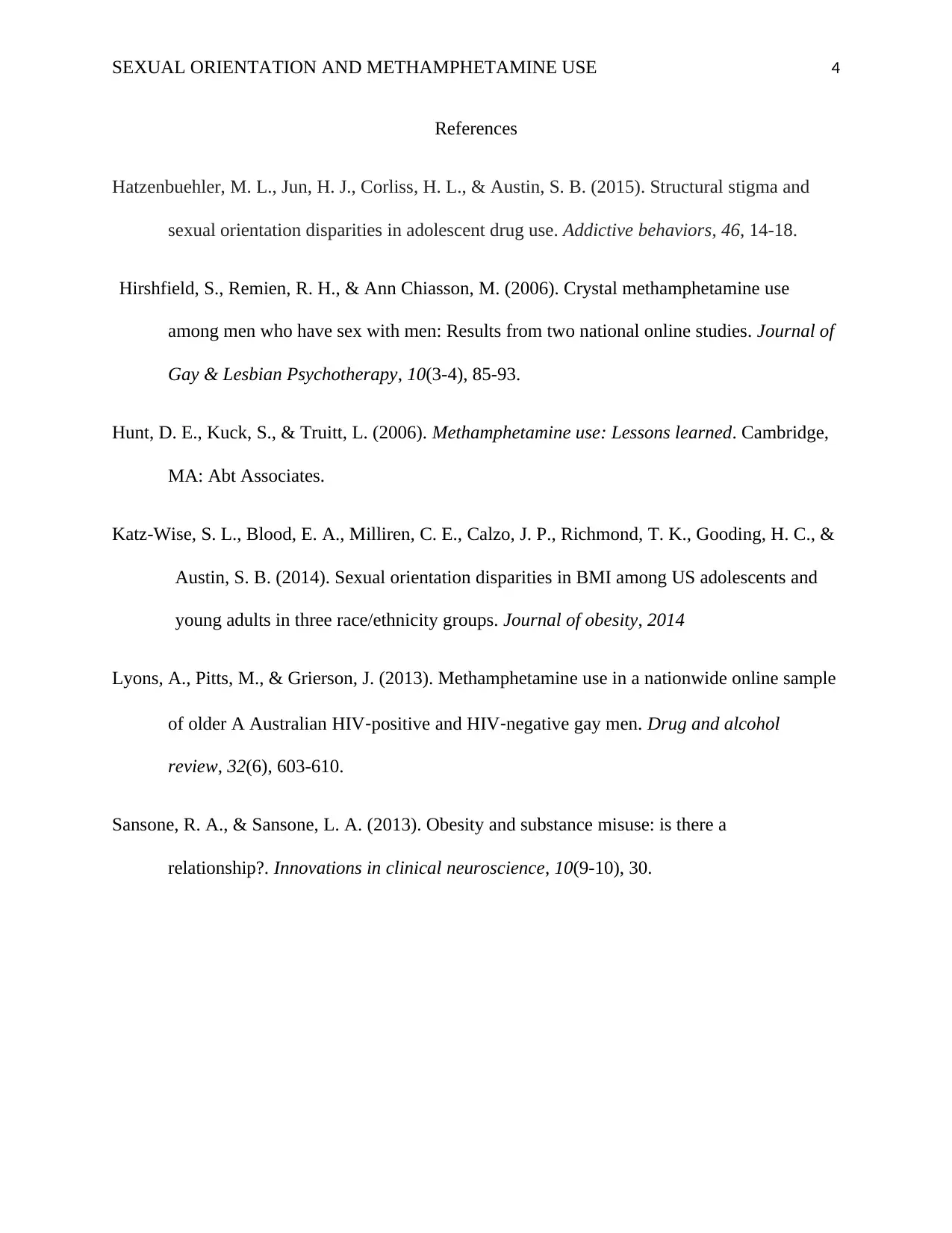Comprehensive Report: Sexual Orientation and Methamphetamine Use in US
VerifiedAdded on 2022/12/27
|4
|985
|37
Report
AI Summary
This report investigates the relationship between sexual orientation and methamphetamine use in the United States. It examines data from the NSDUH and TEDS, highlighting the prevalence of methamphetamine use across different sexual orientations. The report discusses the increased risk of substance abuse among individuals who identify as other than heterosexual, referencing studies that show disparities in drug use rates. It also explores the connection between obesity and methamphetamine use, as well as the impact of HIV status on drug abuse patterns. The report draws on various studies to provide a comprehensive overview of the issue, including the Chicago Crystal Prevention (CRYSP) project's findings, which emphasize the prevalence of methamphetamine use among gay males and the ease of access in certain communities. The report concludes by emphasizing the need for awareness and targeted interventions to address the health and drug abuse issues faced by sexual minorities.
1 out of 4










![[object Object]](/_next/static/media/star-bottom.7253800d.svg)